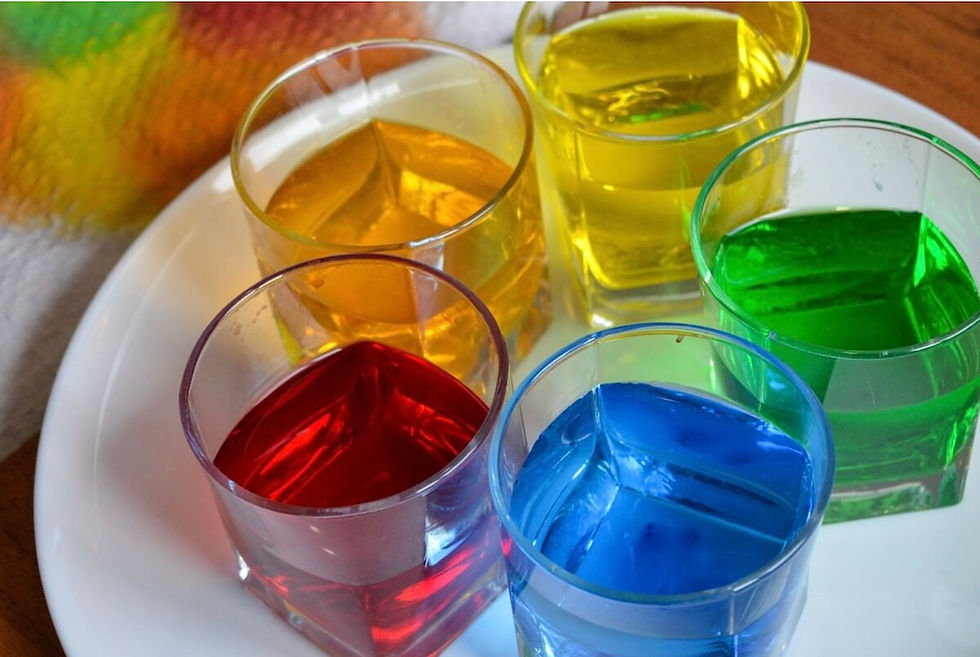How Much Artificial Dye Is in Food?
- FibonacciMD

- Jul 21
- 2 min read
Curious about artificial food dyes?
Explore recent insights into their presence in our food supply and potential implications for health, especially for children.

The Department of Health and Human Services has recently indicated that by 2026, it wants to phase out eight commonly used artificial food dyes from food products. There is some evidence that artificial dyes may be linked to hyperactivity and neurobehavioral problems in children. Most artificial food colors are derived from petroleum products.
But how much of our food supply contains these dyes?
A recent study answered that question. It was published in June 2025, and looked at the amount of artificial dye in food products for the year 2020. Red Dye #3 was banned in 2023 in California and nationally last year. Other commonly used dyes include Red No. 40, Blue No. 1, Blue No. 2, Yellow No. 5, Yellow No. 6, and Green No. 3.

The authors reported that 19% of products produced by the top 25 food companies contained artificial dyes. Red No. 40 was the most common, found in 14% of products reviewed. A significant number of foods contained more than one dye, with 9% containing three or more. Products containing dyes had, on average, 141% higher levels of sugar than those without dyes.
The products containing the largest percentage of artificial dyes were: Sport drinks -79%, Beverage concentrates - 71%, confectionaries - 54%, both energy drinks and carbonated beverages - 39%, baked goods - 22%, and breakfast cereals - 20%. They reported that 28% of the top five product lines marketed to children contained artificial dyes.
Comment:
Eliminating petroleum-based dyes from the food supply may be a positive step to improve health outcomes, especially in children. However, the larger issue of exposure to petroleum-based plastics in the modern diet still remains problematic. To learn more about this issue, read the FibonacciMedicine articles on The Effects of Plastics on Human Health, and How to Reduce Exposure to Microplastics and Chemicals Leaching from Plastics.
References:
Dunford EK et al. All the Colors of the Rainbow: Synthetic Dyes in US Packaged Foods and Beverages in 2020. Journal of the Academy of Nutrition and Dietetics. Published online, June 24, 2025. Retrieved from: https://www.jandonline.org/article/S2212-2672(25)00166-2/fulltext
Seversen K. Kennedy Plans to Phase Out 8 Commonly Used Food Dyes. The New York Times. April 21, 2025. Retrieved from: https://www.nytimes.com/2025/04/21/dining/rfk-jr-food-dyes.html
Report Links Synthetic Food Dyes to Hyperactivity and other Neurobehavioral Effects in Children. State of California Office of Environmental Health Hazard Assessment. April 16, 2021. Retrieved from: https://oehha.ca.gov/risk-assessment/press-release/report-links-synthetic-food-dyes-hyperactivity-and-other-neurobehavioral-effects-children